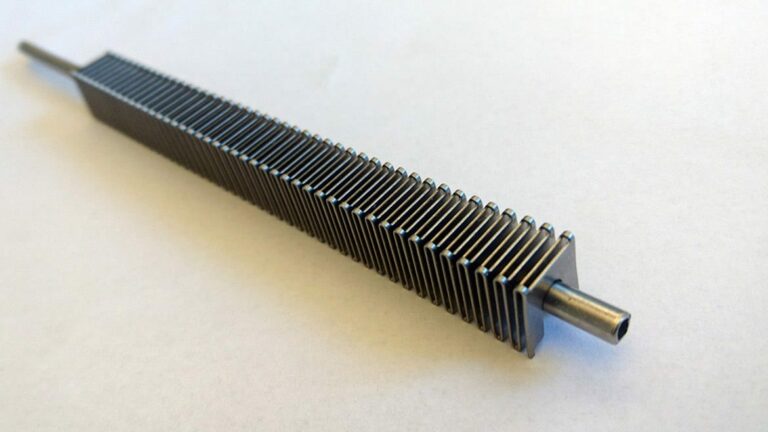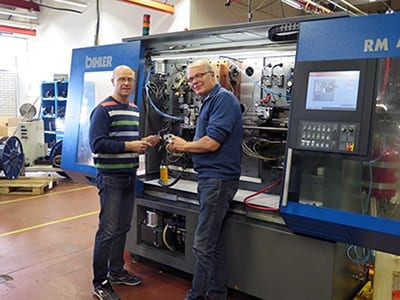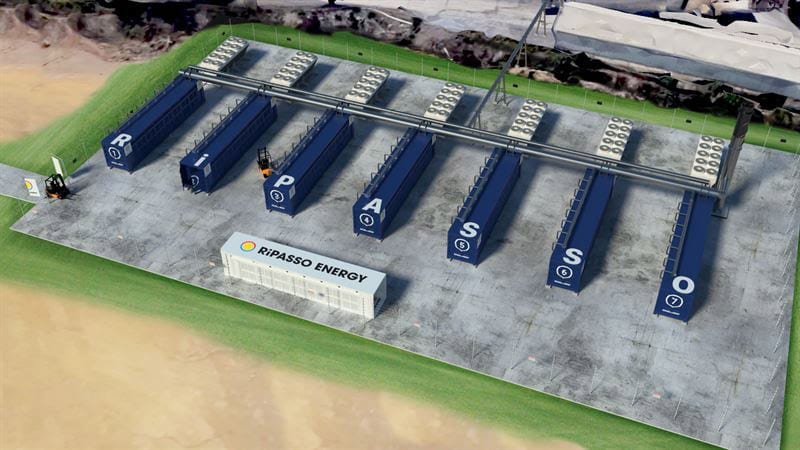Home » Industries » Case Studies » Converting residual gas into electricity
Converting residual gas into electricity
Emissions are reduced when gases are converted into electricity. Lesjöfors supply a punched and bended part in a complex geometry with a crucial function.
With a groundbreaking Stirling engine from the Swedish environmental technology company Swedish Stirling (formerly Ripasso Energy), the largest “waste-to-energy” project of its kind ever implemented in Africa may be realised. Carbon dioxide emissions are reduced dramatically when residual gases are converted into electricity. Lesjöfors supply a punched and bended part in a complex geometry with a crucial function.
Swedish Stirling is a Swedish clean tech company founded in 2008 with a mission to further refine the incomparable ability of Stirling technology to convert thermal energy to electricity. The company’s Stirling engine can handle a wide range of fuels. The company’s latest product, the PWR BLOK 400-F, converts industrial residual and flare gases into electrical energy at a high rate of efficiency.
High-volume production of bent pressings
A few years ago, Swedish Stirling started a project with Lesjöfors in Värnamo when the Stirling engine needed further development and prototypes for new surface enlargement components were needed. The surface enlarger makes the heat absorption in the engine more effective while lowering the exhaust temperature. In each Stirling engine, a large number of surface enlargers, which have a critical function, are used. Swedish Stirling required the components in a heat-resistant material that can withstand extreme temperatures and a cost-effective production method.
After a number of months of intensive work and testing of several prototypes, the winning solution was a pressing in an optimal material for the task, which could be manufactured in a multislide machine at the Lesjöfors factory in Värnamo.
“Our cooperation with Lesjöfors is characterised by a great response to our needs and they are highly skilled for a high-quality, cost-effective product development. With great knowledge and a great teamwork, they have been an important speaking partner for us”, says Christian Jensen, Design Engineer at Swedish Stirling.
Large environmental benefits in South Africa
Swedish Stirling has signed a letter of intent with Glencore operations where a large number of PWR BLOK are planned to be installed in the company’s facilities in South Africa. Glencore is one of the world’s largest mining companies. Swedish Stirling will use the energy from the plant’s gases and generate electricity that Glencore commits to buy. Carbon dioxide emissions are estimated after installation to decrease by up to 476 000 tonnes per year. The project is the largest of its kind in Africa and an opportunity to show that the technology works on a large scale.
“The declaration of intent with Glencore is a great success for Swedish Stirling. It confirms that the PWR BLOK is an optimal solution to make the most of the energy in gases, both from a cost and environmental perspective. Close collaboration with our subcontractors is crucial to delivering innovative solutions and products of the highest quality. Lesjöfors is one of our most important suppliers who, with great dedication and expertise, has contributed to improving our product. We look forward to a long and close partnership”, says Gunnar Larsson, CEO of Swedish Stirling.
Broad knowledge and long experience
Lesjöfors is at the absolute forefront of pressings and stampings technology. With a wide range of technologies, the optimal production method can be used, whether it is a few components or extreme volumes of millions of items. The competence covers the whole chain, from design to development and production.
The development team at Lesjöfors in Värnamo with Pär Hämäläinen, technical sales and Roland Nielsen, tool designer at the forefront, are pleased and proud of their part in the process:
“We are happy to be involved in such an exciting development project that can add so much positive value for the environment. Thanks to our extensive experience of complicated geometries, efficient manufacturing methods and material knowledge, we have been able to contribute to the power generating system of the future”, says Pär Hämäläinen.
Related Case Studies
There are no related case studies available at the moment. Visit our overview page with all case studies.
Related Case Studies
There are no related case studies available at the moment. Visit our overview page with all case studies.
Related Case Studies
There are no related case studies available at the moment. Visit our overview page with all case studies.
Find your local partner
Find contact information for Lesjöfors and contact us for all general inquiries.
How can we help you?
Our teams across our spring, pressing, gas spring and metal belt departments are available to help with your enquiry. Please complete the form below and one of our experts will be in touch.




